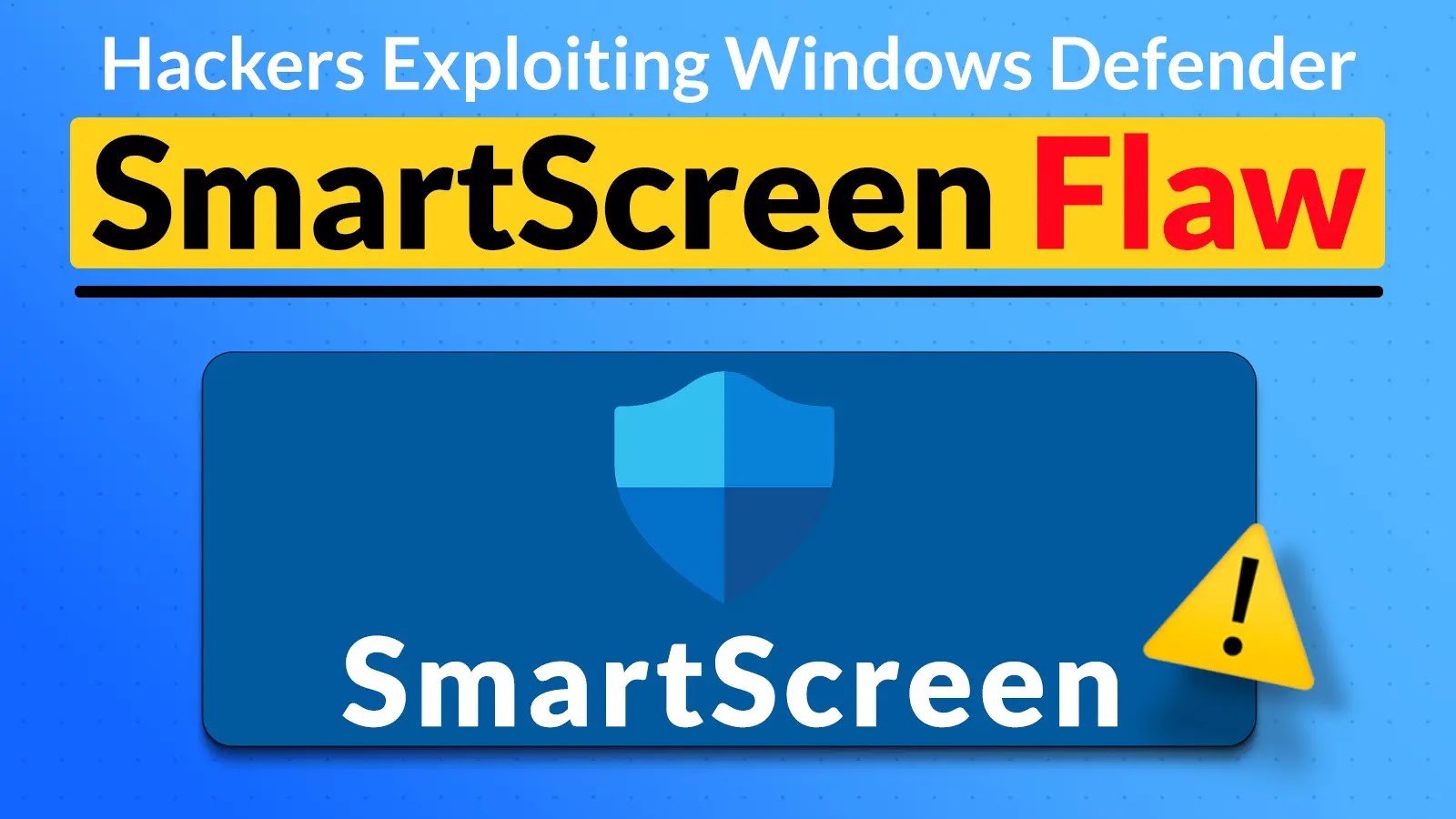Hackers Exploiting Windows Defender SmartScreen Flaw to Hijack Computers

Hackers actively goal and exploit Home windows Defender SmartScreen to deceive customers and lift malicious verbalize by growing convincing, deceptive websites or options.
By evading SmartScreen, the possibility actors amplify the potentialities of their malicious verbalize being done on customers’ systems to compromise security.
This exploitation ceaselessly involves the expend of social engineering tactics to deceive customers and bypass the protective ingredients of SmartScreen.
Recently, cybersecurity researchers at Model Micro discovered that hackers are actively exploiting the Home windows Defender SmartScreen flaw, which is tracked as “CVE-2023-36025,” to hijack Home windows machines.
Flaw profile
- CVE ID: CVE-2023-36025
- Description: Home windows SmartScreen Security Feature Bypass Vulnerability
- Released: Nov 14, 2023
- Closing updated: Nov 22, 2023
- CVSS:3.1 8.8 / 8.2
Hackers are Exploiting Home windows Defender SmartScreen
CVE-2023-36025 in Microsoft Home windows Defender SmartScreen permits possibility actors to exploit .url files that abet in evading security assessments.
The demo codes on social media printed their expend in malware campaigns, collectively with one with a Phemedrone Stealer payload.
AI-Powered Protection for Enterprise Electronic mail Security
Trustifi’s Developed possibility security prevents the widest spectrum of sophisticated attacks previous to they reach a particular person’s mailbox. Are trying Trustifi Free Risk Scan with Subtle AI-Powered Electronic mail Protection .
To provoke Phemedrone Stealer, possibility actors situation malicious Cyber internet Shortcut files on Discord or cloud products and companies that are most ceaselessly disguised with URL shorteners.
Exploiting CVE-2023-36025 makes the customers unknowingly birth crafted .url files, which abet in evading Home windows Defender SmartScreen. Executing the file connects to the attacker’s server, downloading and executing a adjust panel item (.cpl) using a Home windows shortcut to avoid SmartScreen.
Leveraging MITRE ATT&CK T1218.002 the hackers expend the Home windows Retain an eye on Panel process to lift out a malicious DLL that acts as a loader. The DLL calls on PowerShell to salvage and lift out the next stage from GitHub by that contains an obfuscated loader named “DATA3.txt.”
Apart from this, researchers discovered that the PowerShell commands led to the salvage of a ZIP file from GitHub containing three files.
Here under now we to find mentioned those three files:-
- WerFaultSecure.exe
- Wer.dll
- Score.pdf
The wer.dll file decrypts the 2d stage loader for persistence by growing scheduled initiatives. Methods admire API hashing, string encryption, and VMProtect purple meat up the evasion mechanism.
The loader sideloads using DLL spoofing which is done by WerFaultSecure.exe that triggers the WerpSetExitListeners in wer.dll.
Dynamic API resolves the hidden imports using CRC-32 hashing. XOR-basically basically based mostly algorithms with dynamic key technology complicate string decryption. The 2d stage comes loaded in stable.pdf, decrypted using SystemFunction032 for RC4 decryption.
AllocADsMem and ReallocADsMem allocate reminiscence, and VirtualProtect modifies it to Executable-Learn-Write. API callback options redirect execution circulate to the 2d stage by utilizing the CryptCATCDFOpen with the 2d stage’s Entry Point.
The attacker deployed the Donut 2d-stage loader, an birth-provide shellcode enabling the execution of diverse file kinds in reminiscence.
Functions & Services and products Targeted
Here under, now we to find mentioned the entire options and products and companies that are targeted by the malware:-
- Chromium-basically basically based mostly browsers
- Crypto wallets
- Discord
- FileGrabber
- FileZilla
- Gecko
- System Info
- Steam
- Telegram
Despite CVE-2023-36025 patches the possibility actors exploit it to avoid the Home windows Defender SmartScreen with malware admire “Phemedrone Stealer.”
This case represents the connection between birth-provide malware and public exploits, highlighting the need for well timed tool updates and implementations of sturdy security alternatives.
Source credit : cybersecuritynews.com

